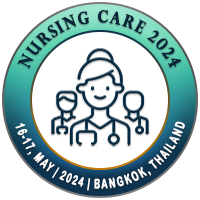
Mrs. Patricia Leite Brito
Federal University of Rio de Janeiro (UFRJ), BrazilTitle: Humanized birth service at an amazon maternity. a successful experience
Abstract
OBJECTIVE: To describe the obstetric practices and general care of the multidisciplinary team at the Normal Intra-hospital Birth Center (CPNI) of a Maternity Hospital in the Amazon region.
METHODS: This is a descriptive, retrospective, and quantitative study, based on data obtained from the CPNI database of a tertiary maternity hospital in a state in the Amazon region. The study carried out an active search for the results of the consultations carried out from November 2021 (beginning of activities) to August 2022, which met the criteria established by the Ministry of Health. Those who were referred to the obstetric center for surgery were excluded. The variables studied were: age group, color, parity, gestational age, number of prenatal consultations, strategies for conducting labor in bed, non-pharmacological resources for the evolution of labor, position adopted in childbirth, and occurrence of perineal laceration. According to resolution 510\2016 and in accordance with Law 12.527\2011, for information collected from the database without patient identification, there is no need for approval by the Research Ethics Committee. The results were entered in an Excel spreadsheet and the EPI-INFO 2020 program was used for statistical analysis.
RESULTS: A total of 115 results were included, with 54 women (47%) self-declared to be brown; 66 (57.4%) were between 16 and 25 years old, 43 (37.4%) were primigravidae, 74 women (64.9%) had more than 7 prenatal consultations, in 58 (51.3%) the strategy “hands-off”. Regarding the strategies of ambience in the bed: 89.8% (97) practiced privacy, 82 (75.9%) light in dim light, 64 (59.3%), sound noise reduction, 56 (51.9%) music and 39 (36.1%) aromatherapy. For pain relief, 50 (46.3%) used warm bath and 63 (58.3%) massage, 67 (66.3%) pelvic movements, 64 (63.4%) ambulation, 36 (35.6%) Swiss ball and 39 (38.6%) 4 (support posture). The most frequent position for delivery was semi-vertical 34 (32.4%). In 63 (58.3%) perineal laceration occurred, and 55 (50.9%) required suturing.
CONCLUSIONS: The use of non-pharmacological resources in the conduct of normal delivery is a strategy that encourages and involves the woman, the family and the health team, to provide a safe and happy moment for birth, with the mother as the protagonist, with care and reduction of obstetric risks, for positive personal experiences, transforming childbirth into a unique moment.
Biography
To be updated

